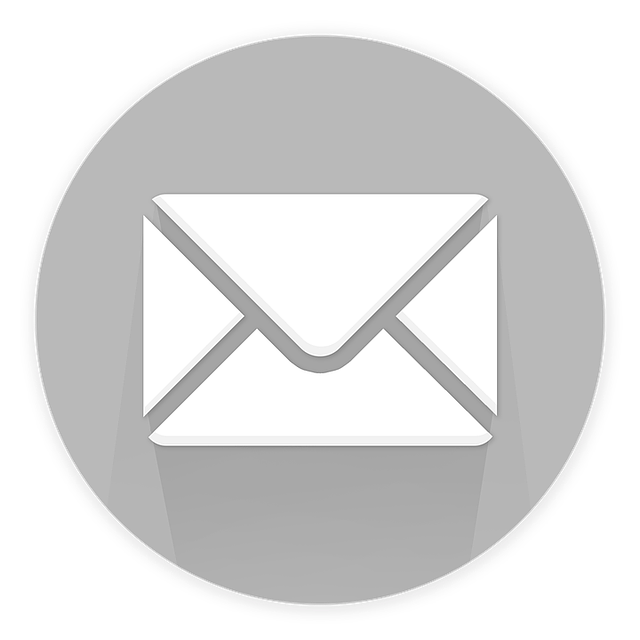Imagine this: you’re sitting at your desk, scrolling through your inbox, and suddenly a captivating email catches your eye. The subject line is intriguing, the content is personalized just for you, and the design is optimized for your mobile device. You can’t help but click on it, and before you know it, you’re making a purchase from an e-commerce store you’ve never even heard of before. That’s the power of email marketing done right.
In this article, we will explore 10 email marketing best practices specifically tailored for e-commerce stores. We’ll show you how to build a high-quality email list, personalize your emails to make your customers feel special, and create compelling content that drives conversions. We’ll also discuss the importance of eye-catching subject lines and mobile optimization, as well as how to effectively analyze and measure the success of your email campaigns.
Whether you’re a small boutique or a large online retailer, these best practices will help you take your email marketing strategy to the next level and boost your e-commerce sales. So let’s dive in and start maximizing the potential of your email marketing efforts!
Key Takeaways
- Build a high-quality email list
- Utilize effective segmentation strategies
- Personalize emails to increase connections and conversions
- Optimize email designs for mobile devices
Build a High-Quality Email List
Building a high-quality email list is crucial for e-commerce stores to establish strong customer connections and maximize sales potential. To achieve this, implementing effective segmentation strategies is key.
By categorizing your subscribers into different groups based on their preferences, purchase history, and demographics, you can send targeted emails that resonate with their specific needs and interests. This personalized approach increases the likelihood of engagement and conversions, as customers feel valued and understood.
Additionally, focusing on email list growth is essential. Encourage website visitors to subscribe by offering exclusive discounts, freebies, or valuable content in exchange for their email address. Utilize social media platforms, partnerships, and lead generation campaigns to expand your reach and attract new subscribers.
By building a high-quality email list and implementing segmentation strategies, you can lay the foundation for successful email marketing campaigns that drive results and foster customer loyalty.
Now, let’s dive into how to personalize your emails.
Personalize Your Emails
Crafting personalized emails is like tailoring a suit specifically for you – it ensures a perfect fit and leaves a lasting impression on your customers. To achieve this, utilize email segmentation to group your subscribers based on their preferences, behavior, and demographics.
By sending targeted emails to specific segments, you can provide content that is relevant and valuable to each individual, increasing engagement and conversions. Another effective strategy is A/B testing, where you send two variations of an email to a small sample of your list and analyze the results to determine the best-performing version. This allows you to optimize your email content, subject lines, and calls to action for maximum impact.
By personalizing your emails, you can build stronger connections with your customers and drive better results. As you move into the next section about ‘use eye-catching subject lines,’ remember that crafting personalized emails is just the first step in creating an effective email marketing strategy.
Use Eye-Catching Subject Lines
Catch your audience’s attention with eye-catching subject lines that will make them eager to open and read your emails. Engaging copywriting techniques and A/B testing subject lines can help you create subject lines that stand out in crowded inboxes. A well-crafted subject line can increase open rates and ultimately drive more traffic to your e-commerce store. To help you get started, here are some examples of effective subject lines:
| Subject Line 1 | Subject Line 2 | Subject Line 3 |
|---|---|---|
| "Limited Time Offer" | "Exclusive Sale Inside" | "Don’t Miss Out!" |
Experiment with different approaches and see which subject lines resonate best with your audience. Analyze data and gather insights from A/B testing to refine your subject lines over time. Remember, the goal is to entice recipients to open your email and engage with your content. Once you have mastered the art of creating eye-catching subject lines, you can focus on creating compelling email content that will convert leads into customers.
Create Compelling Email Content
Once you’ve mastered the art of creating captivating subject lines, it’s time to unleash your creativity and craft email content that truly captivates your audience and drives them to take action.
To improve engagement and increase open rates, it’s crucial to deliver valuable and compelling content in each email you send. Start by personalizing your emails and addressing your subscribers by their names. This simple touch creates a sense of connection and makes your audience more likely to open and read your emails.
Next, focus on delivering relevant and useful information that solves their problems or meets their needs. Provide exclusive discounts, insider tips, or helpful resources that will keep your subscribers coming back for more.
Use clear and concise language, and make sure your call-to-action is prominent and compelling.
Keep your emails visually appealing by using high-quality images and a clean layout.
Finally, end each email with a smooth transition into the next section about optimizing your email designs for mobile, ensuring a seamless user experience across all devices.
Optimize Your Email Designs for Mobile
To ensure a seamless user experience across all devices, it’s crucial to optimize your email designs for mobile. Mobile responsiveness is key to engaging your audience and maximizing conversions.
Here are three ways to optimize your email designs for mobile:
-
Keep it simple: Mobile screens are smaller, so make sure your email design is clean and easy to navigate. Use a single column layout, large fonts, and clear calls to action to enhance readability.
-
Use responsive templates: Choose email templates that automatically adjust to fit different screen sizes. This ensures that your emails will look great on any device, from smartphones to tablets.
-
Test on multiple devices: Before sending out your emails, test them on various mobile devices to ensure they display correctly. This will help you catch any formatting issues and optimize the user experience.
By optimizing your email designs for mobile, you’ll be able to reach your audience effectively and drive better results.
In the next section, we’ll discuss how to analyze and measure your email campaigns to further improve your marketing strategy.
Analyze and Measure Your Email Campaigns
Now that you’ve optimized your email designs for mobile, it’s time to analyze and measure the success of your email campaigns. This is crucial for improving your overall email marketing strategy and increasing your e-commerce store’s success.
Email segmentation is one way to analyze your campaigns effectively. By segmenting your email list based on factors like demographics, purchase history, or engagement levels, you can send targeted and personalized emails that resonate with your customers. This leads to higher open rates, click-through rates, and ultimately, more conversions.
Additionally, A/B testing is another valuable tool for measuring your email campaign performance. By testing different subject lines, email content, or call-to-action buttons, you can gather data on what resonates best with your audience, helping you optimize your future campaigns for even better results.
Frequently Asked Questions
How can I effectively segment my email list to target specific groups of customers?
To effectively segment your email list and target specific groups of customers, you need to engage in personalized marketing. By dividing your customers into different segments based on their demographics, preferences, and purchasing behaviors, you can tailor your email campaigns to their specific needs and interests.
This allows you to deliver relevant content and offers, increasing the chances of conversion. Customer segmentation is the key to unlocking the full potential of your email marketing strategy and maximizing its impact.
What are some strategies to increase the open rates of my email campaigns?
To increase open rates of your email campaigns, start by optimizing your subject lines. Use attention-grabbing language and keep it concise.
Personalization techniques, such as addressing recipients by name or tailoring content based on their preferences, can also improve open rates.
Remember to make your emails valuable and relevant to the recipient.
By implementing these strategies, you’ll significantly increase the chances of your emails being opened and read by your customers.
How can I ensure that my emails are not marked as spam by recipients?
To optimize email deliverability and prevent your emails from being marked as spam, focus on two key strategies:
-
Email content personalization: Did you know that personalized emails have a 26% higher open rate? Tailor your emails to individual recipients by using their names and relevant product recommendations.
-
Maintain a clean email list: Regularly clean your email list to remove inactive or unengaged subscribers.
By implementing these practices, you can improve your email deliverability and increase the chances of your emails reaching the intended recipients’ inboxes.
What are some best practices for designing visually appealing and engaging email templates?
To create visually appealing and engaging email templates, follow the latest email design trends. Use eye-catching colors, fonts, and images that align with your brand. Incorporate interactive elements like GIFs or videos to grab attention.
Additionally, write compelling email subject lines that entice recipients to open your emails. Keep them short, personalized, and intriguing. By combining these tips for email design and subject lines, you can boost open rates and engage your audience effectively.
How can I track and measure the success of my email campaigns in terms of conversions and ROI?
To track and measure the success of your email campaigns in terms of conversions and ROI, utilize email campaign tracking and ROI measurement techniques.
Implement tracking pixels and unique URLs in your emails to monitor user engagement and website conversions.
Use analytics tools to measure click-through rates, open rates, and conversion rates.
By analyzing these metrics, you can identify what’s working and optimize your campaigns for better results.
Don’t miss out on valuable insights that can improve your email marketing strategy.
Conclusion
In conclusion, by following these 10 email marketing best practices, you can take your e-commerce store to new heights.
Build a high-quality email list, personalize your emails, and use eye-catching subject lines to grab your audience’s attention.
Create compelling email content that resonates with your subscribers and optimize your email designs for mobile to ensure a seamless user experience.
Lastly, don’t forget to analyze and measure your email campaigns to continuously improve your strategies.
Remember, with these practices, your email marketing will be as effective as a well-tailored suit – delivering results that are both stylish and impactful.






